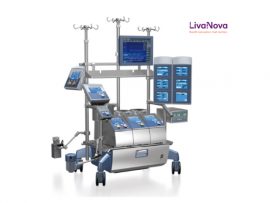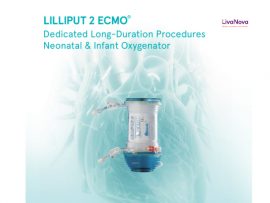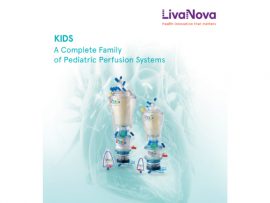Abstract Although surgical techniques and perioperative care have made significant advances, perioperative mortality in cardiac surgery remains relatively high. Single- or multiple-organ failure remains the leading cause of postoperative mortality...
Read MoreOBJECTIVES Cardiopulmonary bypass (CPB) management may potentially play a role in the development of new-onset atrial fibrillation (AF) after cardiac surgery. The aim of this study was to explore this..
Read MoreAbstract Objectives Patients undergoing cardiac surgery often require , which are associated with increased morbidity and mortality. Patient blood management (PBM) strategies, including acute normovolemic (ANH), have been implemented to minimize allogeneic..
Read MoreAbstract Background Burnout has gained increasing attention worldwide as a phenomenon that affects health care professionals. However, there is a lack of relevant research about its impact on practitioners in..
Read MoreAbstract Background: Veno-arterial extracorporeal membrane oxygenation (VA-ECMO) is an effective mechanical circulatory support for cardiac insufficiency following cardiac surgery especially cardiac surgery with extracorporeal circulation, which can quickly restore the perfusion..
Read MoreAbstract Background: The so-called Low Cardiac Output Syndrome (LCOS) is one of the most common complications in pediatric patients with congenital heart disease undergoing corrective surgery. LCOS requires high..
Read MoreAbstract BACKGROUND: Vaso-inotropic agents are frequently used to prevent and/or treat low cardiac output syndrome in infants undergoing surgery for congenital heart disease. Due to the lack of comparative studies,..
Read MoreAbstract Background Adults undergoing heart surgery are particularly vulnerable to respiratory complications, including COVID‐19. Immunization can significantly reduce this risk; however, the effect of cardiopulmonary bypass (CPB) on immunization status..
Read MoreAbstract Cardiopulmonary bypass (CPB) has revolutionized cardiac surgery but poses challenges such as hemodynamic instability and adverse clinical outcomes. Achieving optimal perfusion during CPB ensures adequate oxygen delivery to vital..
Read MoreAbstract Introduction There are several types of surface treatments (coatings) aimed at improving the biocompatibility of cardiopulmonary bypass (CPB) circuit. Some coatings appear to require higher doses of heparin to..
Read MoreAbstract The two hypnotic agents currently used for the maintenance of general anesthesia during cardio-pulmonary bypass (CPB) are propofol and sevoflurane. Propofol can be administered directly in the cardiotome of..
Read MoreAbstract Hemostatic disturbances after cardiac surgery can lead to excessive postoperative bleeding. Thromboelastography (TEG) was employed to evaluate perioperative coagulative alterations in patients undergoing cardiac surgery with cardiopulmonary bypass (CPB),..
Read MoreAbstract Background Our previous showed that a blood management program in the cardiopulmonary bypass (CPB) department, reduced red blood cell (RBC) transfusion and complications, but assessing transfusion practice solely based..
Read MoreAbstract Targeted oxygen delivery during cardiopulmonary bypass (CPB) has received significant attention due to its influence on patient outcomes, especially in mitigating acute kidney injury. While it has gained popularity..
Read MoreAbstract BACKGROUND: Bleeding is a serious complication of cardiopulmonary bypass (CPB) in neonates. Blood product transfusions are often needed to adequately restore hemostasis, but are associated with significant risks. Thus,..
Read MoreAbstract Purpose: Intensive care unit-acquired weakness (ICUAW) affects patient prognosis after cardiopulmonary bypass (CPB) surgery, but its risk factors remain unclear. We investigated these risk factors and developed a nomogram..
Read MoreAbstract Beside the tremendous developments in cardiac surgical procedures, the use of cardiopulmonary bypass (CPB) remains the gold standard to perform cardiac surgery but is associated with detrimental effects (e.g...
Read MoreAbstract BACKGROUND & OBJECTIVE: We aimed to evaluate the effect of sitaxentan on renal microvascular perfusion via application of ultrasound microbubble contrast. METHODS: Male beagles were randomly divided into: Sham,..
Read MoreAbstract Objectives A conservative hemoglobin transfusion threshold is noninferior to a liberal threshold in cardiac surgery. However, red blood cell (RBC) transfusion remains common during cardiac surgery. The authors’ single-center,..
Read MoreAbstract The cardiac operating room (OR) is a high-risk, high-stakes environment inserted into a complex socio-technical healthcare system. During cardiopulmonary bypass (CPB), the most critical phase of cardiac surgery, the..
Read MoreAbstract Objectives del Nido cardioplegia is utilized for myocardial protection in adult patients undergoing cardiac surgery; however, no standardized re-dosing protocol exists. We describe perfusion characteristics and clinical outcomes in..
Read MoreAbstract Purpose: Cardiopulmonary bypass (CPB) is a nonphysiological procedure in which inflammatory reactions and oxidative stress are induced, hormones and hemodynamic parameters are affected, and circulation is maintained outside the body...
Read MoreAbstract Background Cardiopulmonary bypass (CPB) is frequently employed for cardiac surgery, and selecting a suitable priming fluid is a prerequisite for CPB. Currently, the commonly used priming fluids in clinics..
Read MoreAbstract Cardiac surgery using cardiopulmonary bypass (CPB) provokes a systemic inflammatory response. This is mainly triggered by contact activation of blood by artificial surfaces of the extracorporeal circuit. Although often..
Read MoreAbstract Pulmonary arterial pressure (PAH) usually increases after cardiopulmonary bypass (CPB), but this normally does not affect weaning off CPB. Here we report a case of severe PAH in a..
Read MoreAbstract Surgical resection of obstructive tracheal tumors can be challenging to cardiothoracic surgeons and anesthesiologists. It is often difficult in these cases to maintain oxygenation by face mask ventilation during..
Read MoreAbstract Background: Systemic anticoagulation with heparin during cardiopulmonary bypass (CPB) should be neutralized by protamine administration to restore normal hemostasis. Our previous study showed the protamine-to-heparin ratio (P-to-H) of 1:1..
Read MoreAbstract Purpose Further studies are needed in line with the Enhanced Recovery for Cardiac Surgery (ERCS) protocols with a view to reducing anxiety and opioid use in cardiac surgery patients...
Read MoreAbstract Background: Infants < 10 kg undergoing cardiac surgery with cardiopulmonary bypass (CPB) may receive either fresh frozen plasma (FFP) or other solutions in the CPB priming volume. The existing..
Read MoreAbstract Background and aims: Cardiopulmonary bypass (CPB) utilized for cardiac surgeries has been associated with significant mortality and adverse outcomes. The benefits of incorporating nitric oxide (NO) into the CPB..
Read More













